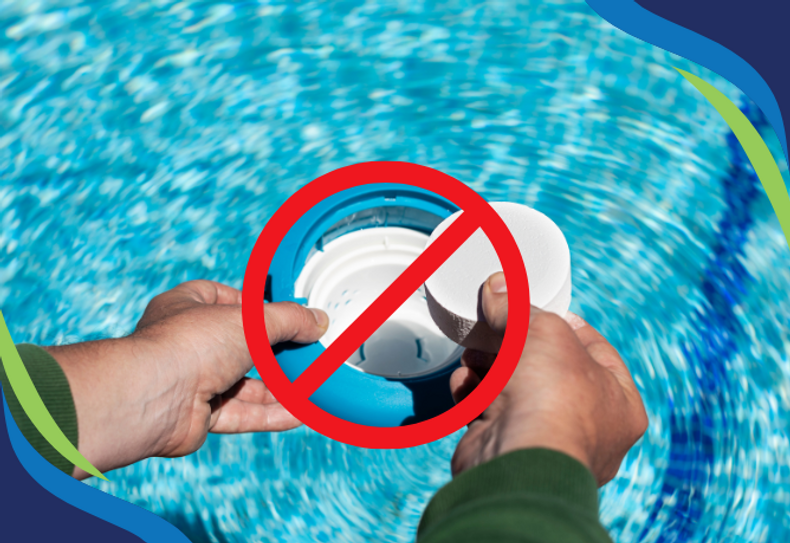For decades, chlorine has dominated the field of water treatment, effectively eliminating harmful microorganisms and keeping water supplies safe. However, recent research has cast a spotlight on the potential downsides of chlorine use, particularly the formation of disinfection by product, (DBPs) that raise health concerns. This has driven the search for greener and more sustainable alternatives in water treatment, and ozone technology has emerged as a frontrunner.
If your company is still using chlorine as a water treatment, it’s time to re-think your sanitation strategy. Chlorine is a yellow-green gas at room temperature and has a pungent smell likened to bleach. It is commonly used to disinfect surfaces and is highly effective in killing microorganisms in water. Most companies prefer using chlorine for its low cost. Despite these reasons, it’s important to ask, do the benefits outweigh the negatives?
Chlorine reacts with naturally occurring organic matter in water to form disinfection byproducts (DBPs), such as trihalomethanes (THMs) and halo acetic acids (HAAs). Some DBPs are known to be carcinogenic or have other adverse health effects, raising concerns about long-term exposure through drinking water consumption. The risks associated with THMs and HAAs are primarily related to chronic, long-term exposure rather than acute exposure. Experts agree that any health concerns from these DBPs are most likely to arise from prolonged exposure over many years, rather than from short-term exposure to occasional spikes in DBP levels.
But fret not, because there is ozone.
Ozone (O₃), a molecule composed of three oxygen atoms, offers a powerful alternative. Like chlorine, ozone effectively inactivates bacteria, viruses, and pathogens in water. However, unlike chlorine, ozone boasts several key advantages:
- No Harmful Byproducts: Unlike chlorine, ozone decomposes naturally back into oxygen, leaving no residual chemicals or DBPs in the water. This eliminates health concerns associated with long-term exposure to chlorine byproducts.
- Superior Taste and Odor: Ozone treatment does not alter the taste or odor of water. In fact, it can improve the taste by oxidizing organic compounds responsible for unpleasant flavors. Water treatment facilities can deliver a noticeably fresher and more palatable product.
- Environmentally Friendly: The use of ozone minimizes environmental impact. Unlike chlorine, which can negatively affect aquatic ecosystems, ozone decomposes naturally and poses no threat to the environment.
- Enhanced Efficiency: Ozone's rapid action and minimal contact time requirements make it an energy-efficient treatment method. This translates to lower operational costs for water treatment facilities while ensuring effective water disinfection.
Beyond Disinfection: The Multifaceted Benefits of Ozone
The benefits of ozone extend beyond just disinfection. Ozone treatment can also be effective in:
- Removing Iron and Manganese: These minerals can cause unpleasant tastes, odors, and staining in water. Ozone oxidation helps to remove them, improving the overall water quality.
- Eliminating Color and Turbidity: Ozone can oxidize organic compounds that contribute to discoloration and cloudiness in water, resulting in a clearer and more visually appealing product.
- Controlling Microorganisms: While ozone primarily targets bacteria and viruses, it can also help control other microorganisms like algae and fungi that can contribute to unpleasant odors and biofilms in water systems.
Investing in a Sustainable Future with Ozone Technology
The water treatment industry is increasingly recognizing the value of sustainability. Ozone technology offers a sustainable and eco-friendly solution for water disinfection, minimizing environmental impact while ensuring the safety and quality of drinking water.
Making the Switch: Considerations for Water Treatment Facilities
While ozone presents a compelling alternative, some factors need consideration before making the switch:
- Initial Investment: Ozone generation systems often require a higher initial investment compared to traditional chlorine-based systems. However, the long-term cost savings from reduced maintenance and energy consumption can be significant.
- Expertise and Training: Implementing and maintaining ozone systems requires specialized knowledge. Water treatment facilities may need to invest in training for their staff or partner with qualified water treatment professionals.
- Integration with Existing Systems: Compatibility with existing water treatment infrastructure should be assessed to ensure a smooth transition.
The future of water treatment lies in embracing innovative and sustainable solutions. While chlorine has served its purpose, ozone technology offers a compelling path forward. By harnessing the power of ozone, water treatment facilities can ensure the safety and quality of drinking water for communities while safeguarding the environment for generations to come.

